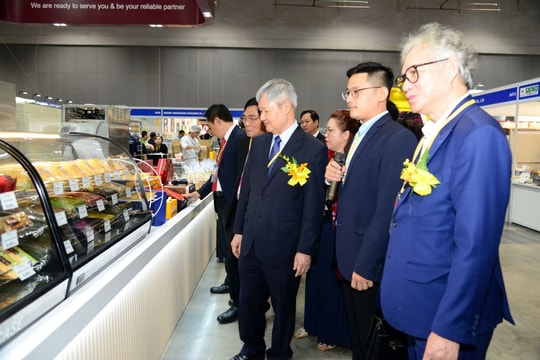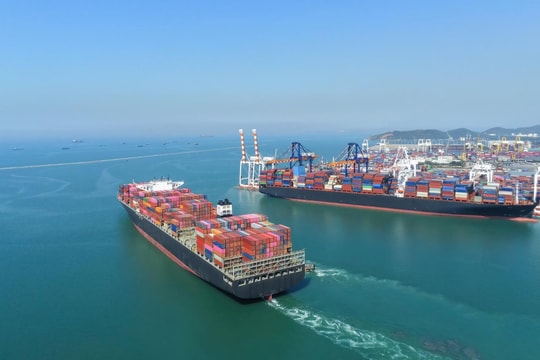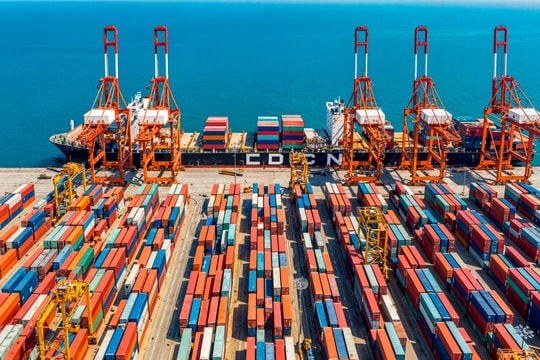The U.S. decision to delay the tariff for 90 days and temporarily reduce it to 10% is seen as an initial victory for Vietnam’s proactive, flexible, and decisive economic diplomacy. Amidst a global trend of trade protectionism and supply chain restructuring, Vietnam’s “soft defense” approach has proven its practical value.
Proposal for Delay and Import Commitment
Immediately after the U.S. announced the 46% tariff, Prime Minister Pham Minh Chinh sent an official proposal to Washington, requesting a 45-day postponement to facilitate dialogue and find common ground. At the same time, Vietnam's Ministry of Industry and Trade actively contacted the U.S. Trade Representative’s Office (USTR) to clarify Vietnam’s efforts in balancing bilateral trade. Alongside this proposal, Vietnam committed to increasing imports from the U.S., including technology products, agricultural goods, and defense and security items—areas of particular interest to the U.S. This demonstrated that Vietnam was not evading the issue but chose a constructive and substantive approach.

This gesture was positively acknowledged by the U.S. In his latest statement on Truth Social, President Donald Trump emphasized that over 75 countries, including Vietnam, had refrained from retaliating and instead showed goodwill to negotiate. According to Trump, this cooperative stance earned these countries, including Vietnam, a 90-day tariff delay with a temporary rate of just 10%, instead of the much higher rate imposed on countries like China.
This reflects how Vietnam addressed the issue not just bilaterally, but also positioned itself strategically within the broader U.S. trade framework. This “soft but agile” strategy allowed Vietnam to safeguard national interests while presenting itself as a reliable partner in Washington's eyes.
In a notable diplomatic move on April 4, 2025, General Secretary To Lam held a phone conversation with President Trump. Reuters described this exchange as “very effective,” with positive signals indicating that the two countries would continue discussions to reach a fair and mutually beneficial trade agreement. Shortly after, the U.S. announced the 90-day tariff delay and a temporary 10% rate—seen as a tactical retreat acknowledging Vietnam’s policy efforts.
Role of Businesses and Trade Organizations in Policy Advocacy
Beyond the government, business associations such as VCCI and AmCham Vietnam played a proactive role in policy advocacy. In early April, they sent letters to U.S. Commerce Secretary Howard Lutnick and the Chairman of the Senate Finance Committee, voicing concern that the high tariff would harm both economies. They argued that the 46% rate was “economically unjustified” and could erode the long-standing bilateral trade trust.
Major exporters in sectors like textiles, footwear, wood, and electronics worked closely with the government, providing updates and proposing adaptation strategies. Some large firms proactively expanded storage capacity in secondary markets such as Japan and Europe while restructuring supply chains to reduce dependency on the U.S. market.

Notably, multinational corporations like Apple, Intel, and Samsung are increasing investment and production in Vietnam following the temporary tariff relief. This not only boosts FDI inflows in Q2 2025 but also reinforces Vietnam's role as a key global manufacturing hub post-pandemic. Vietnam is increasingly seen as a strategic destination for investors seeking stability and efficient operations amid geopolitical uncertainty.
Domestic Policy Adjustments and Long-Term Strategy
Vietnam’s government also launched parallel economic measures to reaffirm its commitment to trade balance. The Ministry of Finance proposed cutting import tariffs on several U.S. products such as LNG, automobiles, and ethanol—items in which the U.S. has strong advantages but limited market share in Vietnam. Simultaneously, the Ministry of Information and Communications officially authorized Starlink, SpaceX’s satellite internet service, to operate infrastructure in Vietnam—signaling openness to U.S. tech and encouraging tech transfer.

Additionally, the government formed special task forces to review technical barriers, non-tariff regulations, and import-export procedures. These reforms aim not only to meet U.S. expectations but also to advance Vietnam’s institutional competitiveness.
In the long run, Vietnam aims to increase the export share of high-tech and high-value-added products, moving away from basic assembly. Promoting next-generation trade agreements such as the CPTPP, EVFTA, and UKVFTA is also viewed as a key tool to diversify markets and reduce overdependence on a single partner.
U.S. Treasury Secretary Scott Bessent publicly thanked Vietnam for its prompt and constructive handling of U.S. concerns. He also welcomed the bilateral agreement to negotiate a long-term trade deal—highlighting the strategic importance of Vietnam-U.S. trade ties.
Deputy Prime Minister Ho Duc Phoc also proposed that the U.S. Department of Commerce closely coordinate with relevant Vietnamese ministries and agencies throughout the negotiation process to ensure effectiveness, transparency, and mutual benefit.
The U.S. decision to delay the tariff and implement a 10% temporary rate is not only a short-term diplomatic success but also a clear testament to Vietnam’s strategic negotiation capacity and flexibility amid global trade volatility. It also serves as a reminder of the need for proactive national roles in shaping future trade and protecting economic interests. Moving forward, Vietnam must maintain a proactive stance and foster strong coordination between the state, businesses, and international organizations to uphold its position in global trade. The lessons from this tariff case will guide strategic responses to geopolitical and economic shifts in the coming decade.



.jpg)

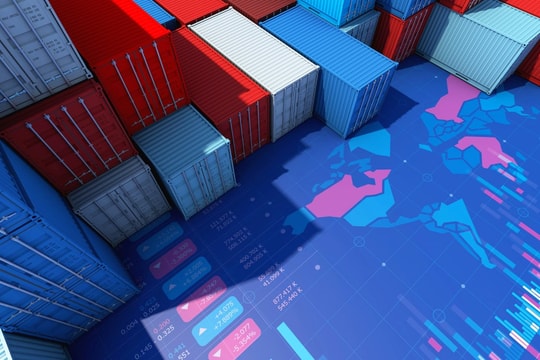
.jpg)
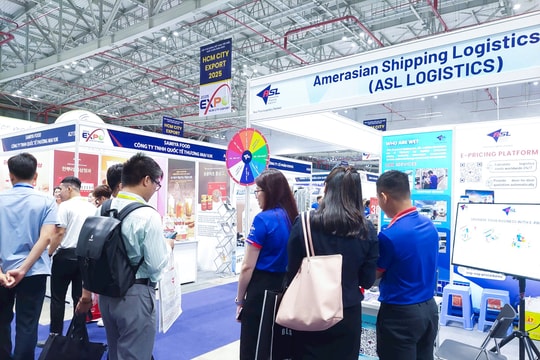
.png)


